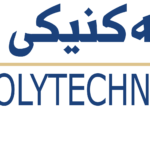- Bashir Eskander Kareem
- [email protected]
- 0750 113 4682
- P.hD. [Bashir Eskander Kareem]
-
Global energy consumption has risen over the past decade, driven by the growth in population and the economy. The building sector is the largest energy consumer, accounting for 40% of total energy and causing one-third of CO2 emissions. Half of building energy consumption goes to HVAC systems. Thermal energy storage offers an excellent method for providing sustainable energy that can be utilized for free cooling, heating, and ventilation in buildings.
The free cooling system stores thermal energy in thermal energy storage during the night and utilizes it throughout the day. Latent heat thermal energy storage is recommended due to its high energy capacity, minimal impact on temperature and volume changes. The primary challenges associated with integrating PCM in free cooling systems pertain to the thermophysical properties of PCM itself and the system's reliance on climatic conditions.
In hot climates, solidifying PCM may encounter challenges. As a potential solution, there is a proposal to incorporate an evaporative cooling system with a PCM-to-air heat exchanger, with the goal of facilitating the PCM solidification process.
In this study, the enthalpy method has been employed in the CFD model for the PCM-to-air heat exchanger, and the EES model has been utilized for the entire system. The system consists of a multi-stage evaporative cooler and a PCM-to-air heat exchanger. According to the CFD findings, the melting and solidification time is reduced with decreasing PCM panel thickness, decreasing air channel height, increasing PCM panel length, and higher flow rate of HTF. The main parameter to change melting and solidification time is the temperature difference between HTF and PCM’s melting temperature.
The primary objective of this study is to design, construct, and develop a cooling and ventilation system that incorporates both evaporative cooling and a PCM-to-air heat exchanger.
The system employs organic paraffin-based PCMs-RT21HC and RT25HC, arranged in series to reduce melting and solidification durations. Experimental and numerical findings demonstrate that starting with PCM RT21HC in the heat exchanger reduces solidification time, while initiating with PCM RT25HC shortens the melting time. Also, the results clearly demonstrate that the solidification time is significantly longer compared to the melting time. PCMs completely melt in less than 4 hours, whereas PCM-RT21HC does not solidify completely even after 12 hours.
Utilizing PAHX without a cooling system can provide thermal comfort for less than 4 hours, but when combined with evaporative cooling, the PCMs can solidify, enabling the system to operate continuously and effectively.
The system offers cooling and ventilation, effectively extending indoor thermal comfort by stabilizing the outlet air temperature through the use of PCM to air heat exchanger. Typically, the supply air temperature to the conditioned space ranges between 21 to 25°C.
- Erbil Technical Engineering College
- Mechanical and Energy Engineering
- Thermo-fluid


